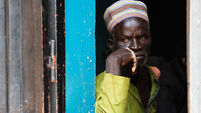Zapatista rebels embark on transformation
The Zapatista rebels embarked on a historic transformation today at a mass meeting intended to take them out of their jungle hideouts and into the cut-throat world of Mexican politics.
It left some of their supporters wondering whether they would also have to leave behind their trademark ski masks, poetic rhetoric and Indian constituency.














